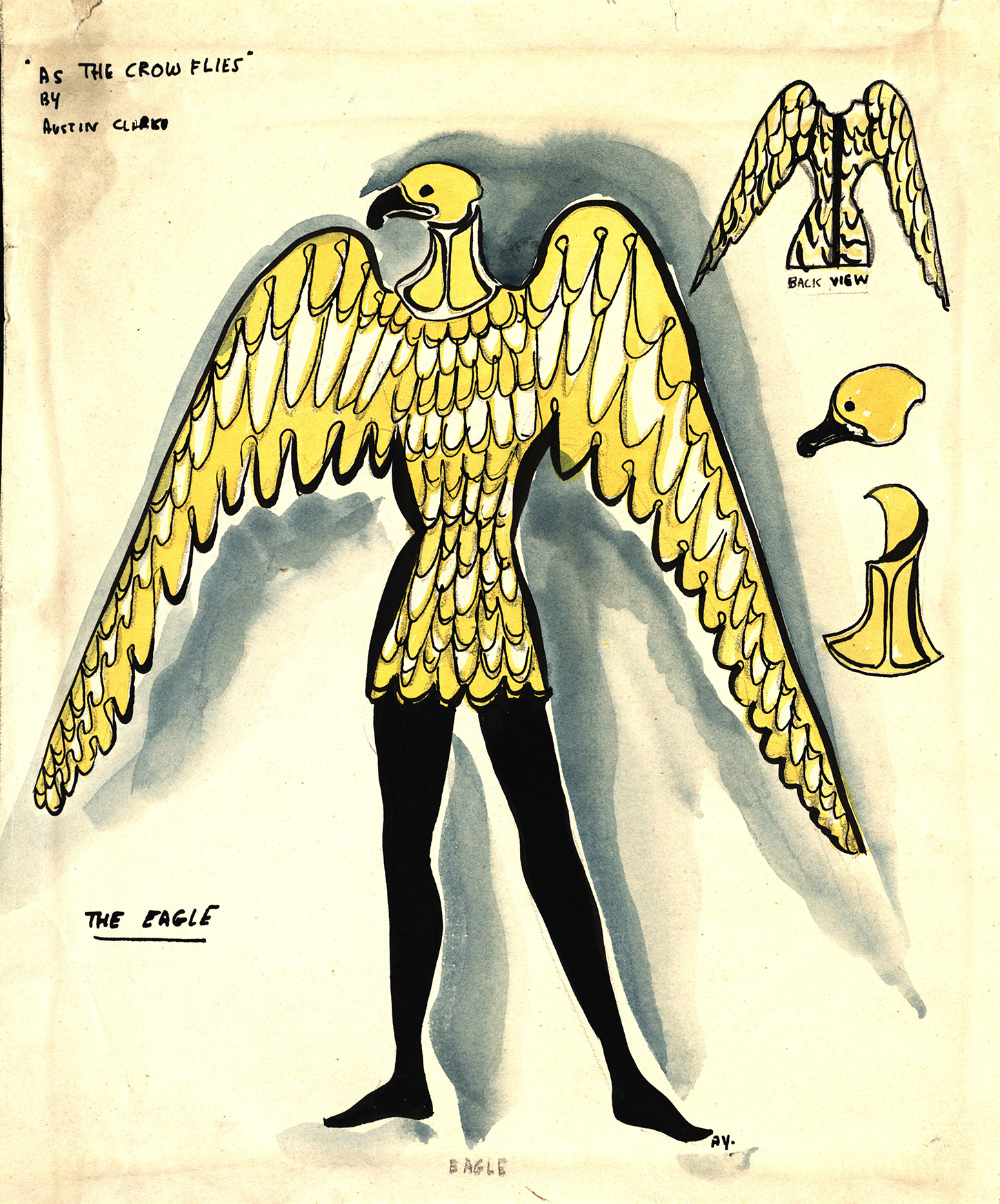Running until the 6th of February 2022, Anne Yeats: The Everyday Fantastic at the National Gallery of Ireland offers its viewers a look into the whimsical world of her work, as the daughter of William Butler Yeats. Dive into her creepy and charismatic pictures, as they transport you back to your youth. I was lucky enough to get responses on the exhibit by its co-curators Grace O’Boyle and Donna Rose, both fellows at ESB Centre for the Study of Irish Art.
We discussed what was important to convey to viewers. They replied that they “wanted to create an environment that was playful and experimental, as Yeats’ practice was, and conveyed the ways that archives are arranged and organised, and how you may encounter the works if you were visiting the archive in person.” They continued: “the exhibition highlights creativity, experimentation and process in Yeats’ art practice across a number of decades, demonstrating the importance of artists’ archives and the role they play in an artist’s work — as a location where creativity, experimentation, failure and progress in art practice are documented.”
“‘We then used programmes like PowerPoint to create mock-ups of each exhibition case, and tried to digitally arrange the works to scale. There were many Zoom calls!’”
The curation team had to work entirely remotely for the majority of the time whilst organising this show. They were forced to establish new means to organise these pieces, since sitting down together physically was off the table. They explain how they approached the process :“We started by gathering as many photographs of the archival materials as possible, and then we identified potential themes in the work. We then used programmes like PowerPoint to create mock-ups of each exhibition case, and tried to digitally arrange the works to scale. There were many Zoom calls! It all felt a little abstract until we were able to come onsite to physically install the works into the space, and we found that the exhibition we arranged remotely was very close to the final arrangement. So the process worked surprisingly well!”
There was an overwhelmingly positive reaction by the public to the Jack Butler Yeats exhibition, Anne Yeats’ uncle, recently showcased in the gallery, but it is extremely significant to have this exhibition also as a solo show. “Anne Yeats had a broad interest in and knowledge of modern art and design, and she played a big role in establishing and supporting important Irish arts initiatives, such as the Graphic Studio Dublin, the Irish Exhibition of Living Artists, and many more. We feel that an exhibition of the materials from the artist’s archive is important in that it provides an unparalleled insight into the creative processes and imagination of this dynamic and influential figure in Irish cultural history.”
Yeats was chief designer for the Abbey Theatre and its publication. “Her work at the Abbey theatre laid the foundation for her career as both an artist and designer. It introduced her to the tactile and material aspects of building visual worlds. Anne integrated materials and fabrics such as muslin cloth into her oil paintings (Green Cloth Floating, 1994) to explore pattern making and texture, a practice possibly enriched by her work as a costume designer.”
“‘The sketches show Yeats conceptualising her idea for the scene and working through a series of imagined worlds in which a unicorn will inhabit. The mural has since been painted over, but the sketchbook serves a reminder of her work’”
When asked what pieces were their favourites, both curators had an image in mind. O’Boyle responded that hers is “a sketchbook that holds a series of preparatory sketches for a mural at the Unicorn restaurant on Baggot Street. The sketches show Yeats conceptualising her idea for the scene and working through a series of imagined worlds in which a unicorn will inhabit. The mural has since been painted over, but the sketchbook serves as a reminder of her work and how interwoven art and history is into the disappearing cultural fabric of our cities.”
Rose followed with her top piece: “It is a small sketch in green pen titled Zoo People. Yeats has drawn the work quite expressively in green pen — with figures in 1940s style clothing leaning over an enclosure and a humorous sketch of one woman juggling two very small and very excited children. It really captures a moment in time, a snapshot of a windy Dublin day spent at the Zoo during a time of great worldwide upheaval.”
“Her fantastical animals, fine art prints, and backstage theatre-inspired pieces offer a selection happily consumed by all”
The curators explain what exactly is captured in this show: “The exhibition showcases things like her appetite for learning about different cultures, her affection towards animals and the diversity of her practice, so in a way, it captures certain aspects of her life and creative inner landscape. Perhaps how much of the artist’s personality is captured in the less polished works. The nature of things like sketchbooks is that they are often private spaces for artists to express themselves freely without the intention to display them publicly. They can experiment with different approaches, write notes, even shopping lists — it feels very personal and really brings the person behind the artwork to life.” Anne Yeats’ work has certainly left a lasting impression on both her exhibit’s curators and its viewers. Her fantastical animals, fine art prints, and backstage theatre-inspired pieces offer a selection to be happily consumed by all.






